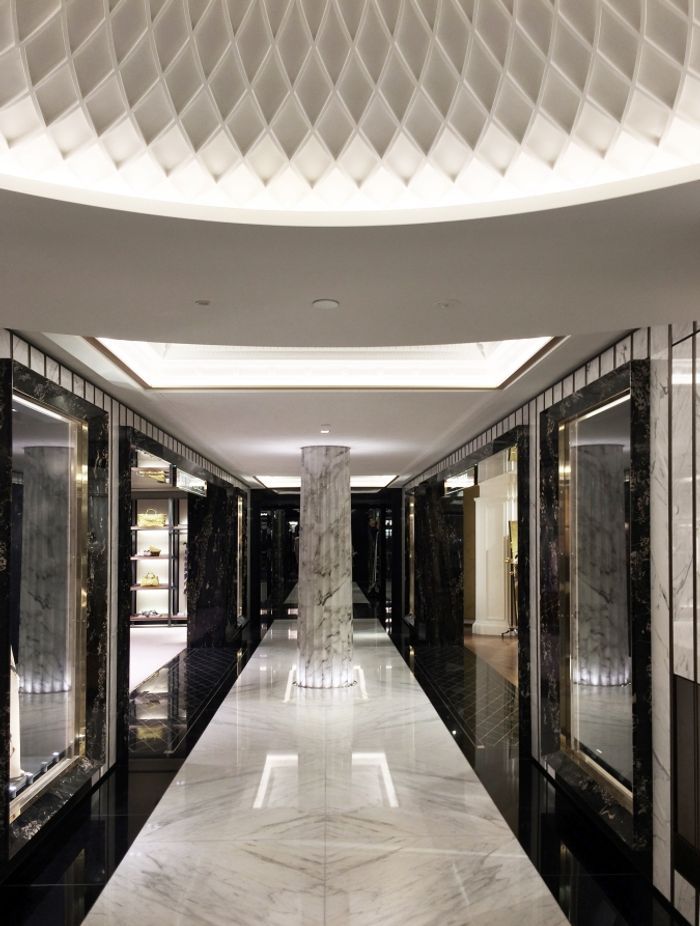Woods Bagot's Tracey Wiles on creating a sense of place, and why she ignores design trends
Written by
25 November 2021
•
4 min read

An aesthete from a young age, Tracey Wiles was always destined for a career in design. But while most will pick a single discipline, ‘just’ having an interior design or architecture degree wasn’t quite enough for Tracey – so she got both. “When the time came to consider university I was caught between the artistic side of graphics and discipline of architecture, so embarked on interiors. However, after completing my degree I felt constrained by every wall, structure and service, so I remedied that with an architecture degree! It was a licence to challenge on more levels to aspire to the best solution for a project.”
This incredible wealth of knowledge in both interior design and architecture has led to an illustrious career that spans over 20 years working in Europe on prestigious projects including Harrods’ flagship London store, and, back in her native Australia, leading the design on Sydney’s iconic and award-winning Opera Residences in her role as Principal and Regional Interior Design Leader at Woods Bagot.

Global influence, local focus
Woods Bagot’s worldwide reach – it has 17 studios across 6 regions – was a big factor in her return to Australia four years ago. “A really important factor in moving to Woods Bagot was its global presence and being part of a wide-reaching community seeking design excellence with many differing constraints,” Tracey explains. “Exposure to other cultures, work processes, values, budgets and programs elevates and diversifies our understanding of the design process in relation to our local context – wherever that may be.”
Working in Europe for over two decades granted Tracey exceptional mentors and historic influences along with a strong sense of discipline, hierarchy, materiality and luxury – all concepts that have deeply impacted her design philosophy and approach to projects.
She describes the Australian design industry as incredibly fast-paced by contrast, without the constraints that can come with working in countries with long histories and deeply-engrained approaches and attitudes to design and architecture. “Australians have an innovative, open-minded approach to things,” she says, adding that there is a sense of creative freedom in Australia that sees designers looking back to honour the history and context of spaces while looking to the future. “The infancy of Australian history engenders a real pioneering attitude, resulting in an amazing ability for designers to look forward without being tethered to historical references,” she explains.
The infancy of Australian history engenders a real pioneering attitude, resulting in an amazing ability for designers to look forward without being tethered to historical references.


Storied spaces
Currently working on high-profile commercial projects including the first refurbishment of the InterContinental Sydney in 40 years and the new QT Parramatta, Tracey’s days are also filled with high-end residential projects – a lesser known wing of Woods Bagot that is no less rewarding.
No matter the design or architecture project, Tracey says the key to success is creating a sense of place – and that means developing a strong narrative informed by the site’s social and cultural history that resonates with the client, site and its future visitors.
“If you've got that strong narrative and story then it can actually inform every material every detail – and that's how you start to form a sense of place,” she says. “A story with intelligence and depth can unite the team, client, suppliers, contractors, designers and consultants. When your whole team buys into a narrative you get an incredible result that doesn't show the tension of the process, and users can experience and appreciate the narrative without having to understand it in depth.”

A return to quality
While narrative informs every one of her projects, Tracey – along with the rest of the Woods Bagot team – can’t say the same of design trends. Instead, she and the Woods Bagot team work with a philosophy founded in the importance of quality, craft and longevity.
“When I first went to Europe, you’d see the new hotels and they were all trend-driven, lightweight and veneered – and they fell apart. And then you’d go to the Ritz and even though it it felt over the top, there was a sense of quality. Now, when you when you marry the two – forward thinking while tapping back into artisans and craftsmanship – you create a sense of permanence and longevity.
“Beauty is also a great driver for sustainability so if we are putting in things that are durable, particularly with interiors, they will stand the test of time.”
Words by Madelin Tomelty